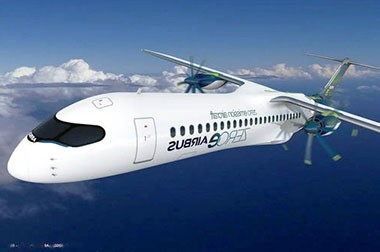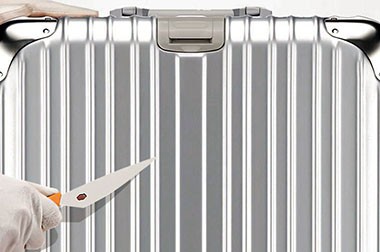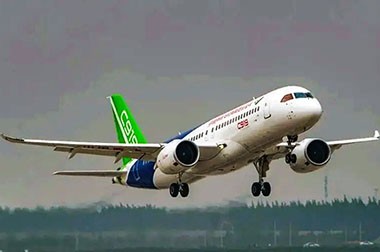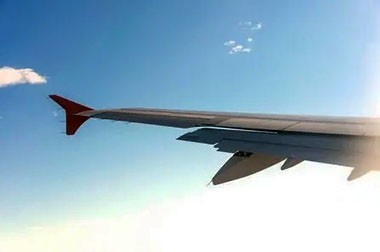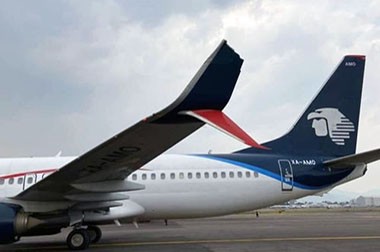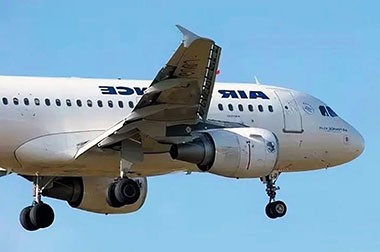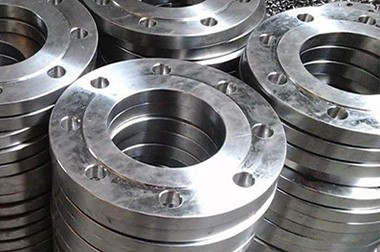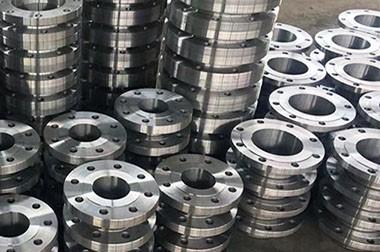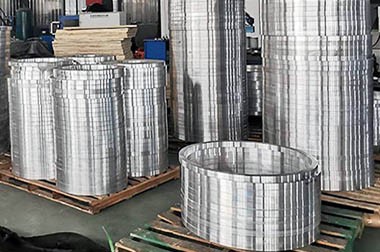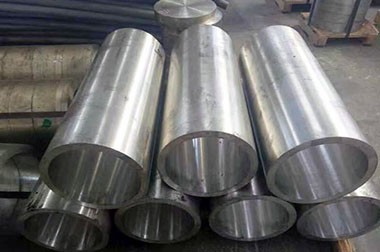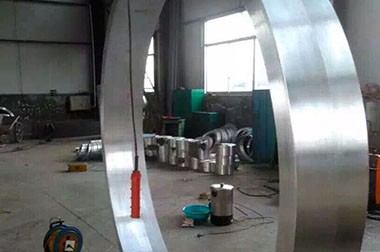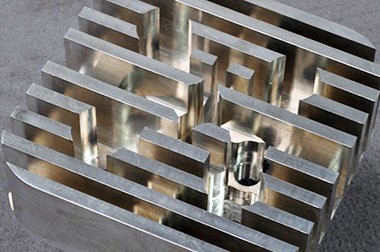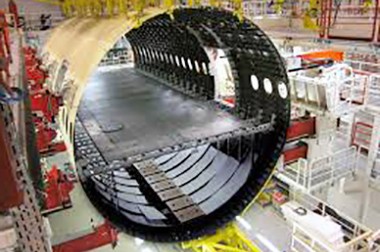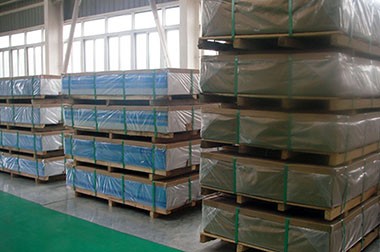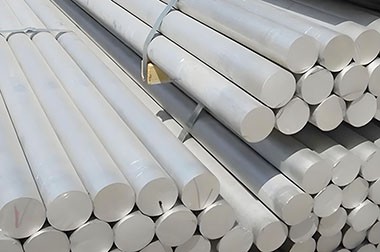7050 Aerospace Grade Aluminum Forging
7050 aluminum alloy is a high-strength aluminum alloy primarily composed of zinc as the main alloying element, typically containing small amounts of magnesium, copper, and manganese. Due to its excellent mechanical properties, good corrosion resistance, and outstanding weldability, 7050 aluminum forgings are widely used in the aerospace field.
7050 aluminum forgings are extensively used in aviation due to their superior strength, corrosion resistance, and weldability. They are mainly employed in the manufacture of fuselage structural components, wing beams, landing gear components, and tail assemblies. These parts often need to withstand high loads and harsh environments, and 7050 aluminum alloy can provide the necessary strength and toughness. Additionally, 7050 aluminum forgings are commonly used in critical structures of high-performance aircraft to ensure safety and reliability.

Applications of 7050 Aerospace Aluminum Forgings
1. Fuselage Structural Components
7050 aluminum forgings are widely used for key structural components of aircraft fuselages, such as frames and skins.
Reason for Selection: The fuselage requires high strength and excellent fatigue performance to withstand repeated loads during flight. The low density and high strength characteristics of 7050 aluminum alloy significantly reduce the weight of the fuselage, enhancing range and fuel efficiency.
Product Form: Typically available as aluminum forgings or aluminum plates, treated with heat treatment and shaped through processing.
2. Wing Beams
Wing beams are the main load-bearing structures of the wings, and the excellent strength and rigidity of 7050 aluminum make it an ideal material for wing beams.
Reason for Selection: Wing beams must withstand significant bending and twisting forces during flight; the excellent rigidity and strength of 7050 aluminum ensure stability and safety in flight.
Product Form: Generally produced as aluminum forgings, shaped through precision forging and machining to achieve the desired shape and performance.
3. Landing Gear Components
Commonly used for main beams, supports, and connecting components of landing gear, ensuring safety and reliability in high-stress environments.
Reason for Selection: Landing gear experiences severe impacts and loads during takeoff and landing, and 7050 aluminum forgings, with their outstanding fatigue resistance, effectively prevent damage in high-stress conditions, ensuring flight safety.
Product Form: Typically produced as aluminum forgings, heat-treated and precisely machined to ensure strength and accuracy of each component.
4. Tail Components
Tail structures, such as vertical and horizontal stabilizer frames.
Tail structures need to withstand aerodynamic loads during flight, and the high strength and corrosion resistance of 7050 aluminum ensure stability and durability in various weather conditions.
Product Form: Made from aluminum forgings and extrusions, processed and surface-treated to enhance performance.
5. Aircraft Engine Components
Such as engine mounts and other load-bearing structures, especially in areas requiring high strength and corrosion resistance.
In aircraft engines, parts need to possess high strength and corrosion resistance to withstand high-temperature and high-pressure environments. 7050 aluminum alloy meets these requirements.
Product Form: Typically available as aluminum forgings, subjected to complex heat treatment and machining to ensure strength and stability.
Haomei Hot Selling Aluminum Forging Products
Haomei Aluminum offers alloys including 2014, 2024, 2124, 2219, 2618, 2619, 3003, 5083, 6061, 7049, 7050, 7075, 7079, 7149, 7150, and 7175 temper alloys, available upon request, complying with all AMS, ASTM, Boeing commercial, and Boeing military specifications.
| TYPE | SPECIFICATIONS |
| 2014 | AMS4133, 4134, 4314, AMS-A-22771 |
| 2024 | AMS-QQ-A-367 |
| 2219 | AMS4143, 4144, AMS-QQ-A-367, AMS-A-22771 |
| 2618 | AMS4132, AMS-QQ-A-367, AMS-A-22771 |
| 6061 | AMS4127, 4146, AMS-QQ-A-367, AMS-A-22771 |
| 7049 | AMS4111, AMS-QQ-A-367, AMS-A-22771 |
| 7050 | AMS4107, 4108, AMS-A-22771 |
| 7075 | AMS4126, 4131, 4141, 4147, AMS-QQ-A-367 |
| 7079 | AMS-QQ-A-367 |
| 7150 | AMS-A-22771 |
| 7175 | AMS4148, 4149, 4179, AMS-A-22771 |
Performance of 7050 Aluminum Forgings
| Mechanical behavior | Metric | imperial |
| Hardness, Brinell | 140 | 140 |
| Hardness, Knoop | 177 | 177 |
| Tensile Strength, Ultimate | 524 MPa | 76000 psi |
| Tensile Strength, Yield | 469 MPa | 68000 psi |
| Elongation at Break | 11% | 11% |
| Modulus of Elasticity | 71.7 GPa | 10400 ksi |
| Poissons Ratio | 0.33 | 0.33 |
| Shear Modulus | 26.9 GPa | 3900 ksi |
| Shear Strength | 303 MPa | 44000 psi |
Chemical composition of 7050 aluminum forgings
| Element | Mass Fraction % |
| Aluminum | 86.4-90.0 |
| Zinc | 6.0-7.0 |
| Magnesium | 2.1-2.9 |
| Copper | 1.4-2.0 |
| Manganese | ≤0.10 |
| Chromium | ≤0.04 |
| Titanium | ≤0.06 |
| Germanium | ≤0.06 |
| Strontium | ≤0.03 |
| Any other single impurity | ≤0.05 |
| Total impurities | ≤0.15 |
Physical property for 7050 aluminium forgings
| Physical Property | value |
| Melting Point, °F(°C) | 1060-1180 (571-638) |
| Thermal Expansion, in/in/°F(µm/m/°C) | 13.1*10-6 (23.6*10-6) |
| Electrical Resistivity, µohm-cm | 3.5 |
| Thermal Conductivity, Btu/(ft * h * °F) (W/m * K) | 79.4 (137) |
| Specific Heat, Btu/(lb * °F) (J/kg * K) | 0.24 (1005) |
| Density, lb/in^3 (g/cm3) | 0.101 (2.81) |
| Elastic Modulus, ksi (GPa) | 10.8*10-6 (74.5) |
| Poisson's Ratio | 0.33 |
Melting property requirements for 7050 forgings
| Melting Property | value |
| Solidus Temperature, °F(°C) | 1010 (544) |
| Liquidus Temperature, °F(°C) | 1090 (588) |
| Brazing Temperature Range, °F (°C) | 1125-1175 (607-635) |
You may also be interested in the following
-
7050 T7451 Aluminum for Aircraft Fuselage Reinforcement Frame
7050 T7451 high-strength aluminum alloy is particularly suitable for aircraft fuselage reinforcement frames, longitudinal beams, bulkheads and other structural parts.
-
7050 Aircraft Aluminum for Trailing Edge Ribs
7050 aluminum alloy is selected for the trailing edge ribs due to its strength-to-weight ratio, which helps maintain the optimal aerodynamic performance of the wing.
-
7050 Aircraft Aluminum for Cargo Floor Beams
7050 heavy-duty aluminum is designed for cargo hold floor beams, providing the strength necessary to support heavy loads while maintaining lightweight characteristics.
-
7050 Aircraft Aluminum for Bulkheads
7050 aerospace aluminum is used for bulkhead structures, providing strong structural support and compartments within the aircraft.
-
7050 Aerospace Aluminum for Baggage Bin Structure
7050 is a lightweight yet strong aluminum material used for suitcase structures, providing strength without adding unnecessary weight.
-
7050 7475 Aerospace Aluminum for Wing Attach Structure
Alloys 7050 and 7475 are used in the construction of wing attach structures, ensuring safety and durability during flight.
-
7050 7475 7099 Aircraft Aluminum for Wing Ribs
7050, 7475, and 7099 high-strength aluminum alloys are used to manufacture wing ribs, providing structural support to the wings and enhancing structural integrity.
-
7050 7475 7099 Aerospace Aluminum for Wing Spars
7050, 7475, and 7099 have outstanding strength-to-weight ratios and fatigue resistance, making these high-strength aluminum alloys ideal materials for manufacturing wing spars.
-
2024 7050 7075 Aerospace Aluminum for Horizontal Tail Fittings
Alloys 2024, 7050, and 7075 provide the necessary strength and stiffness for horizontal tail components of aircraft, ensuring reliable control surface performance.
-
7050 Aircraft Aluminum for Leading Edge Ribs
Aluminum 7050 is specifically used for manufacturing leading edge ribs due to its strength and resistance to stress concentration, ensuring aerodynamic performance and structural support.




